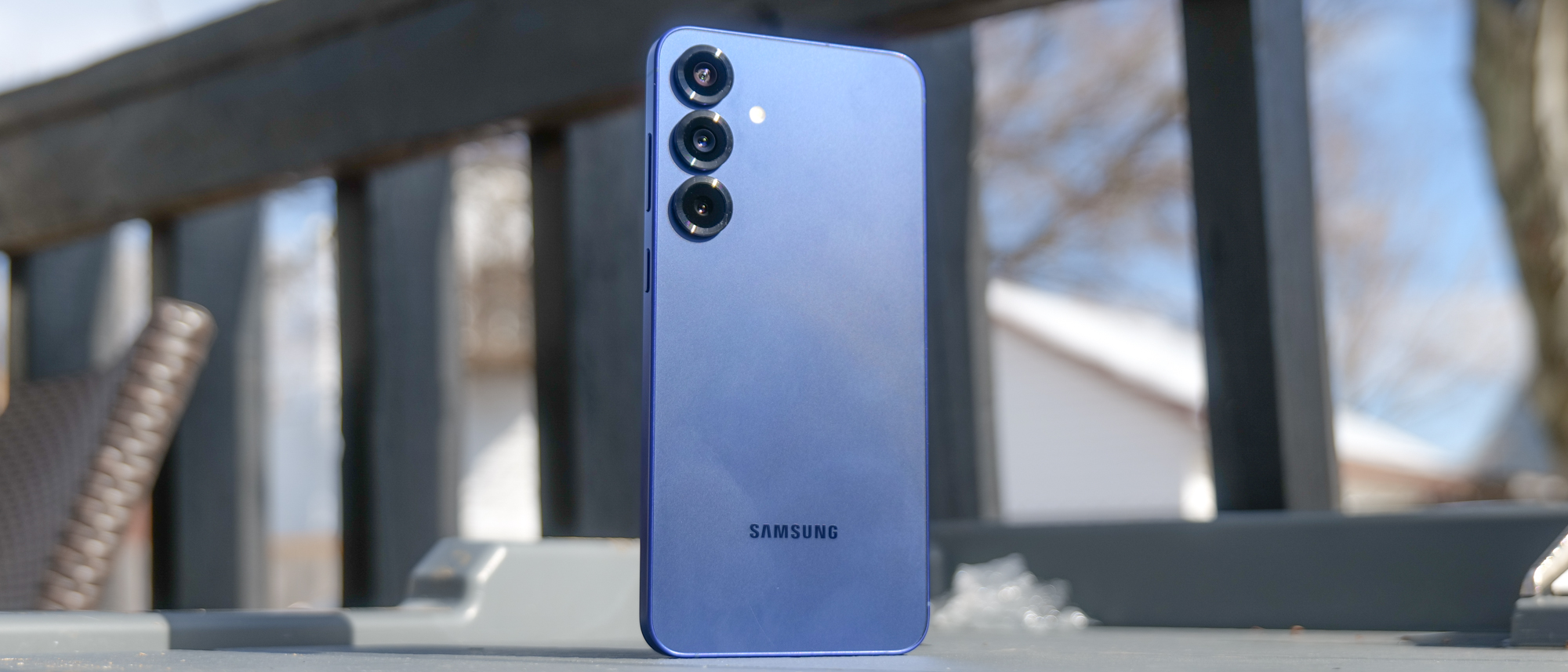Tom's Guide Verdict
The Galaxy S25 Plus is a tougher sell given how it shares the same set of Galaxy AI features and cameras found on the cheaper S25 model. It's a powerful, big-screen phone, but it's hampered by a dimmer display and modest battery life improvements over its predecessor.
Pros
- +
More helpful Galaxy AI features
- +
Powerful Snapdragon 8 Elite performance
- +
Capable cameras
- +
Thinner, lighter design
Cons
- -
Battery life could be better
- -
Dimmer screen
Why you can trust Tom's Guide
This year more than ever, the middle child in Samsung’s flagship lineup faces an unprecedented level of scrutiny. Scrunched in the middle of the Galaxy S25 lineup, the Galaxy S25 Plus is in a predicament given how it’s trying to convince people to choose it over the cheaper Galaxy S25. If that's not enough, there’s also the more premium Galaxy S25 Ultra, which offers a step up in terms of cameras and screen size.
That’s because the $999 starting cost of the Galaxy S25 Plus makes it a prime target for other premier flagship models like the iPhone 16 Pro and Pixel 9 Pro. This year’s model looks unchanged from the outside, but it certainly has its hardware upgrades on the inside — namely the mighty Snapdragon 8 Elite for Galaxy, which has proven to be a juggernaut when it comes to gaming.
Similar to last year’s model, the bigger focus continues to center around Galaxy AI and how it can have an effective impact on how you use it. In my Galaxy S25 Plus review, I’ll tell you if those AI additions are practical or not and whether they make the S25 Plus worth picking up.
Samsung Galaxy S25 Plus review: Specifications
| Row 0 - Cell 0 | Samsung Galaxy S25 Plus |
| Starting price | $999/£999 |
| Display | 6.7" QHD+ Dynamic AMOLED 2X Display |
| Refresh rate | 120Hz adaptive |
| Rear cameras | 50MP main (f/1.8), 12MP ultrawide (f/2.2), 10MP 3x telephoto (f/2.4) |
| Front cameras | 12MP selfie (f/2.2) |
| Chipset | Snapdragon 8 Elite for Galaxy |
| RAM | 12GB |
| Storage | 256GB, 512GB |
| Battery/battery test result (hrs:mins) | 4,900 mAh / 17:14 |
| Charging | 45W wired, 15W wireless |
| Operating system | Android 15 with One UI 7 |
| Water/dust resistance | IP68 |
| Size | 6.23 x 2.98 x 0.28 inches / 1158.4 x 75.8 x 7.3 mm |
| Weight | 6.7 ounces / 190 grams |
| Colors (Samsung Store exclusive) | Navy, Icyblue, Mint, Silver Shadow, Blueblack, Coralred, and Pinkgold |
Samsung Galaxy S25 Plus review: Price and availability
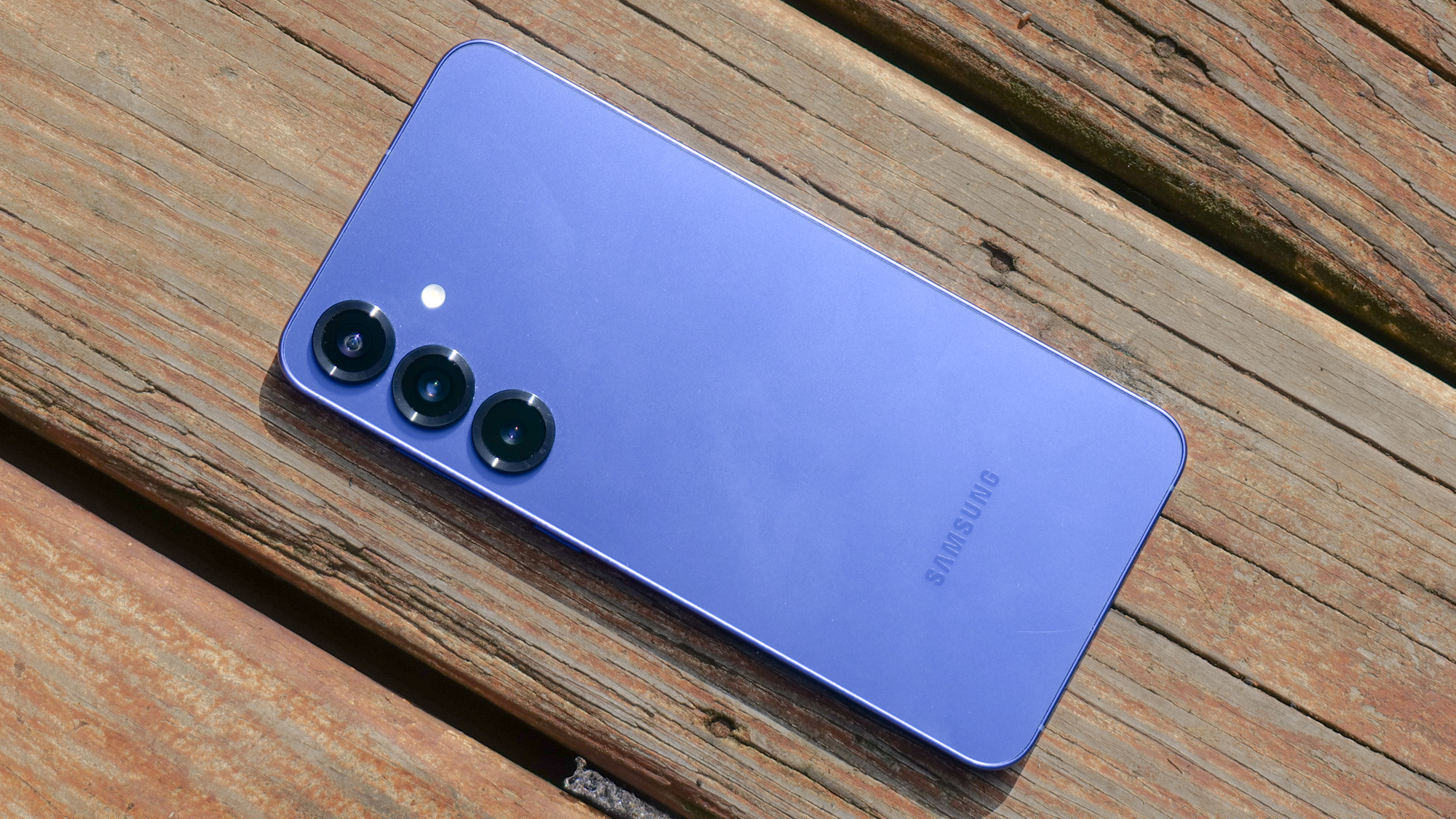
I can’t complain about the $999 cost of the Galaxy S25 Plus, especially when it’s remained unchanged from what the Galaxy S24 Plus cost. That’s a welcome relief given how so many recent phones have seen price hikes.
The $999 price provides enough breathing room against the other two models in the lineup, but the real benefits of choosing the S25 Plus over the cheaper S25 is that you get double the starting storage of 256GB, a larger battery, 45W wired charging and a bigger screen. Everything else, including the triple cameras on the back, are identical.
But comparing Samsung's phone to other phones that cost the same, like the iPhone 16 Pro and Pixel 9 Pro, the Galaxy S25 Plus’ 3x optical zoom camera falls short compared to the 5x zoom capabilities found on those devices. This is the biggest reason why I think they have a competitive advantage over the Galaxy S25 Plus, which I’ll explain more in the camera section.
The Galaxy S25 Plus went on sale starting on February 7, 2025. It’s available in either your choice of 256GB or 512GB of storage, with the latter fetching for a heftier $1,119. You’ll have your choice of colors consisting of Navy, Icyblue, Mint, Silver Shadow, Blueblack, Coralred, and Pinkgold. Those later three colors are exclusive to Samsung, though.
Samsung Galaxy S25 Plus review: Design
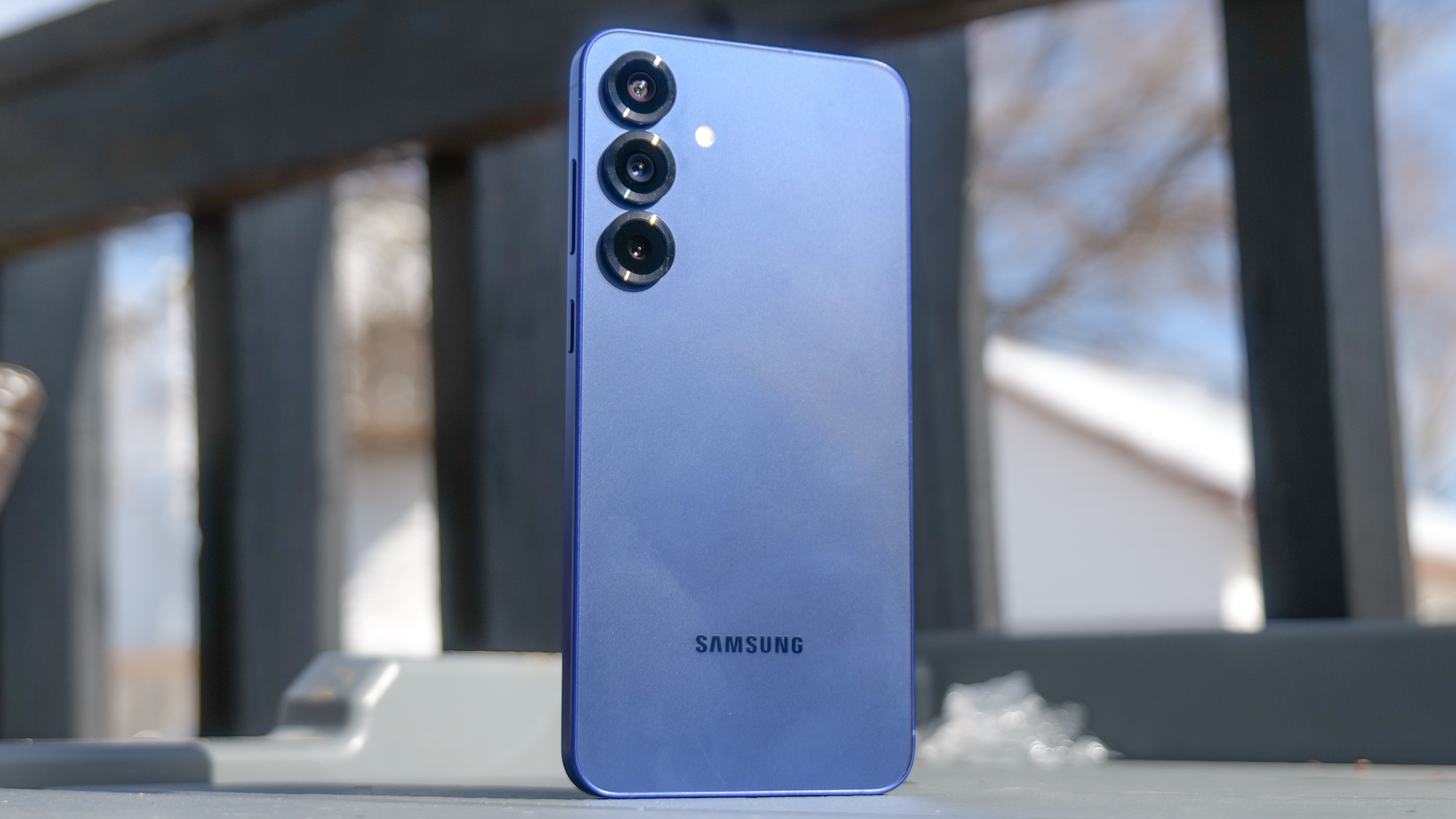
Apart from the shimmer that my navy color Galaxy S25 Plus review unit shows when the light hits the back of the phone at the right angle, this is the same recycled design as the last two generations of Samsung flagships. The flat edges dig into my hand a bit more than other phones with rounded edges, but it’s not terrible. The S25 is a little wide for my liking, but the bezels around the display are slim enough — so it boils down to personal preference.
Thankfully Samsung’s able to make this year's model thinner and lighter, which could be attributed to the new Enhanced Armor Aluminum 2 the Galaxy S25 Plus uses. This results in a lighter 6.7 ounce weight and a thinness of 0.28-inches, versus the S24 Plus’ 6.95 ounce weight and 0.3-inch chassis. Even though the overall design stands to get a bigger makeover, the new phone still feels solidly constructed.
Samsung Galaxy S25 Plus review: Display
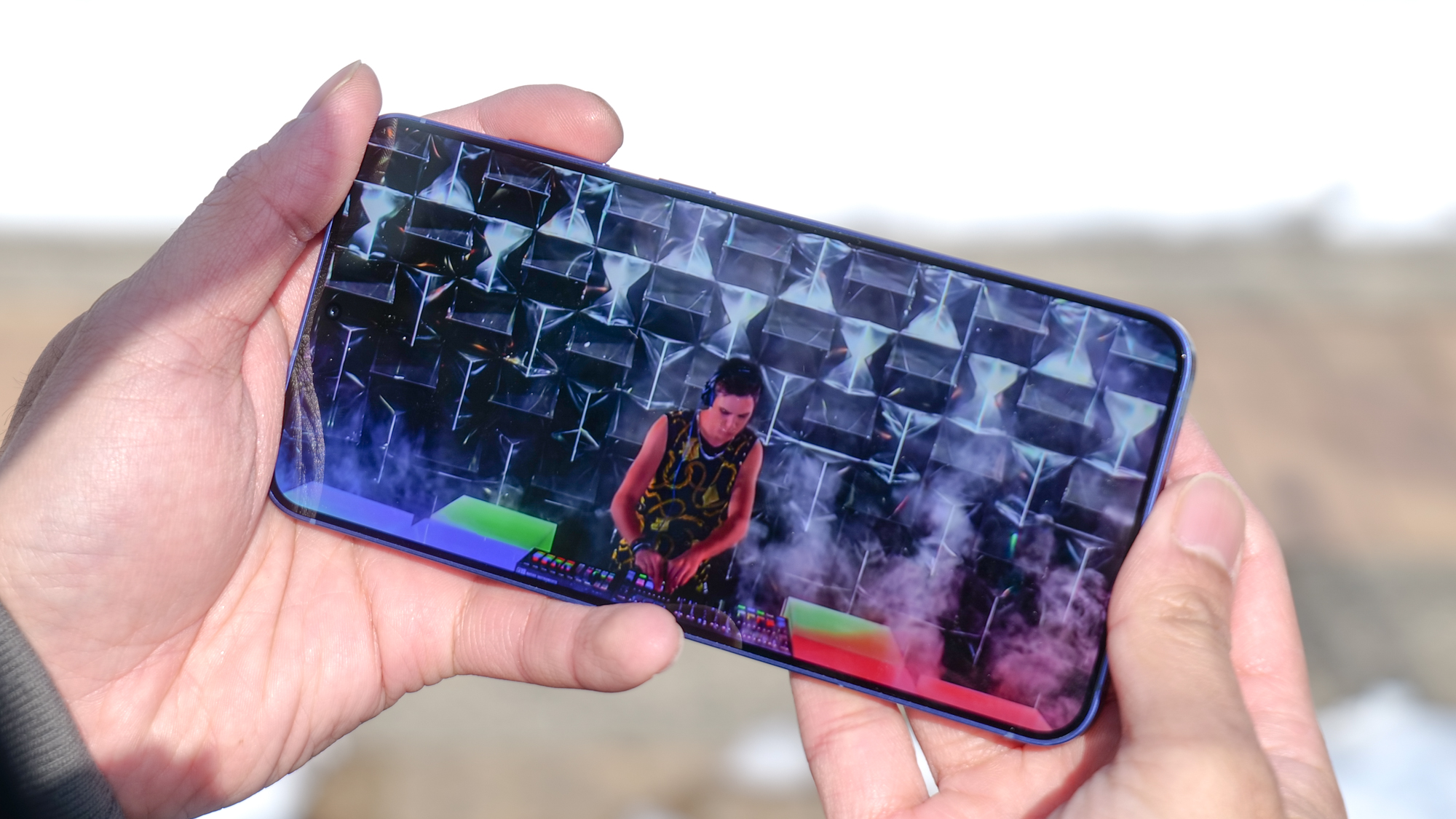
Considering how both the Galaxy S25 and S25 Ultra came away with much brighter screens than their predecessors in our testing, I was hoping for the same with the Galaxy S25 Plus and its 6.7-inch QHD+ AMOLED display. In reality, it came up short at a peak brightness of 1,350 nits — which is actually dimmer than the 1,396 nits achieved by the S24 Plus.
| Row 0 - Cell 0 | Samsung Galaxy S25 Plus (Vivid/Natural color profile) | Google Pixel 9 Pro | iPhone 16 Pro | Samsung Galaxy S24 Plus (Vivid/Natural color profile) |
| Peak brightness (nits) | 1,350 | 1,938 | 1,510 | 1, 396 |
| DCI-P3 color gamut coverage (%) | 107.8 / 87.9 | 86/76.7 | 80.4 | 99/81.5 |
| Delta-E color accuracy (lower is better) | 0.23 / 0.22 | 0.24/0.29 | 0.24 | 0.24/0.27 |
Despite this, the screen still looks sharp, colorful, and modestly visible on bright, sunny days. What I like more about it over the S24 Plus is how the colors look much more vivid, since it doesn’t appear to suffer from the same Mura effect I saw previously.
I pulled up the new Superman trailer on YouTube and the colors absolutely popped off the screen. And thanks to the 120Hz adaptive refresh rate on the S25 Plus display, I love how games I play exhibit that fluid look playing them.
Samsung Galaxy S25 Plus review: Cameras
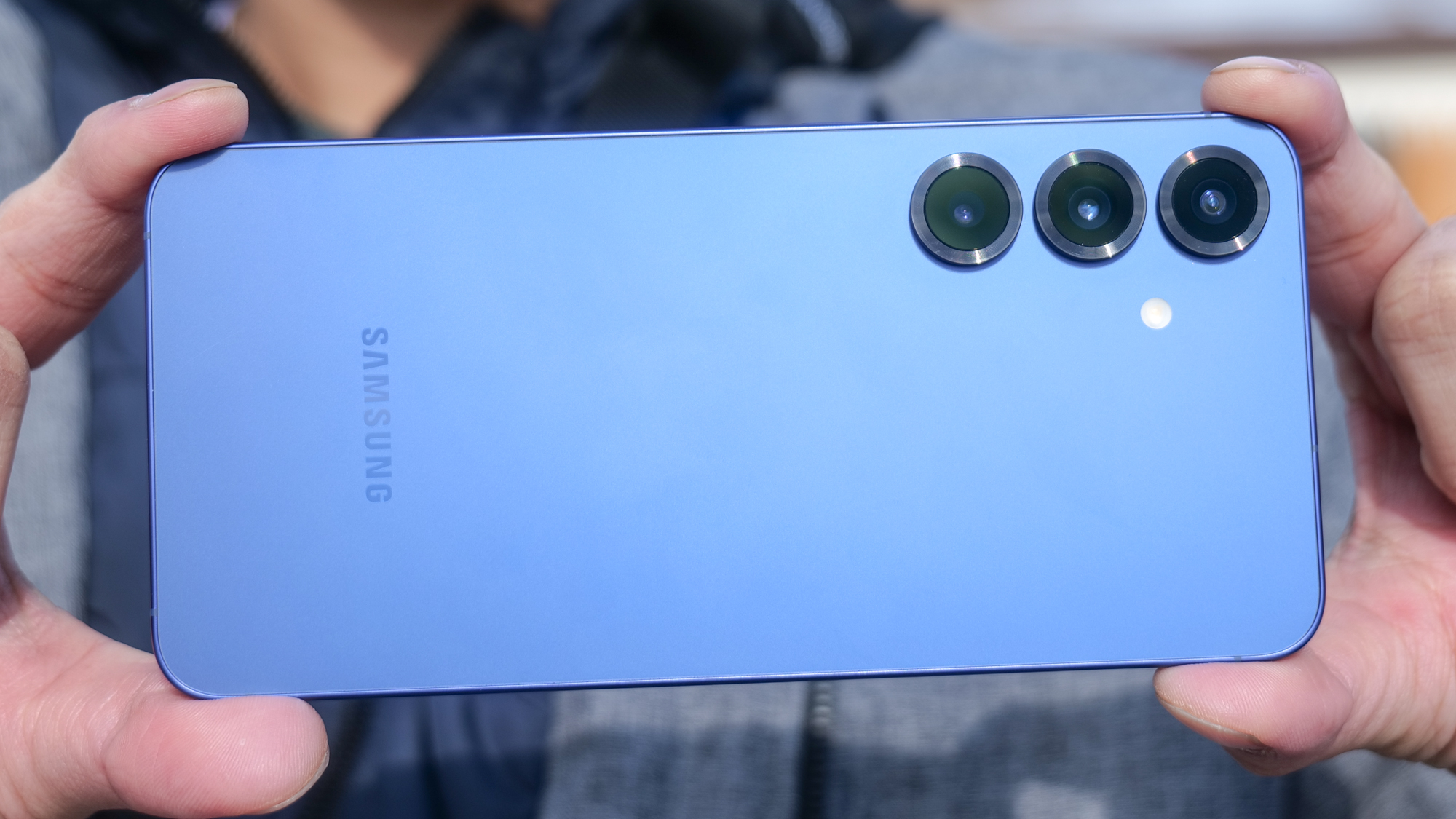
Both the Galaxy S25 and S25 Plus share the same cameras, which consists of a 50MP main camera, 12MP ultrawide camera and 10MP 3x telephoto camera, paired by a 12MP front selfie around the front. Now, it’s important to know that these are essentially the same sensors in last year’s phones. However, updates to Samsung’s ProVisual Engine hint at improved performance overall.
For my comparison photos below, I’m using the iPhone 16 Pro Max to illustrate the differences. You essentially get the same set of cameras on the iPhone 16 Pro.
On its own, the Galaxy S25 Plus camera performance presents very little worth complaining about. The S25 Plus is fantastic at capturing details and colors when the lighting’s great, but against the iPhone 16 Pro Max, there’s clearly this smoothening effect going on with Samsung’s phone. The textures of the wood and sign are softer with the Galaxy S25 Plus, while the iPhone 16 Pro Max exposes them and delivers the brighter picture.
The S25 Plus’ selfie camera holds up really well in my selfie shot above. While my eyes prefer the warmer color temperature of the iPhone’s shot, the Galaxy S25 Plus has a more true-to-life tone. It also helps that it captures a lot of definition in my facial features and the textures of my hat.
Unlike the S25 Ultra, the S25 Plus doesn’t have a dedicated macro mode — which is telling against the iPhone 16 Pro Max. Samsung's phone just doesn’t capture nearly the same amount of detail.
In the zoom department, the 10MP telephoto camera with 3x optical zoom on Galaxy S25 Plus is usable for most situations, but it’s still at a disadvantage compared to the 5x optical zoom shooter of the iPhone 16 Pro/16 Pro Max. Although I can still make out the words on the sign above at 25x zoom, the smaller print on the bottom appears garbled, while they’re somewhat more defined on the iPhone.
And finally, the S25 Plus does an amazing job at illuminating near pitch black conditions. You can see how the tree in the shot above looks like it was snapped with a strong light source nearby, but in reality it was completely dark outside. Upon closer inspection, though, there’s more definition around the tree with the iPhone 16 Pro Max’s shot.
If the cameras are high on your list, you’ll have to pony up and choose the Galaxy S25 Ultra. Even though the Galaxy S25 Plus is more than capable of taking excellent photos, its performance comes up short against the iPhone 16 Pro. In the $999 price bracket, you really need at least a 5x optical zoom camera to compete.
Samsung Galaxy S25 Plus review: Performance
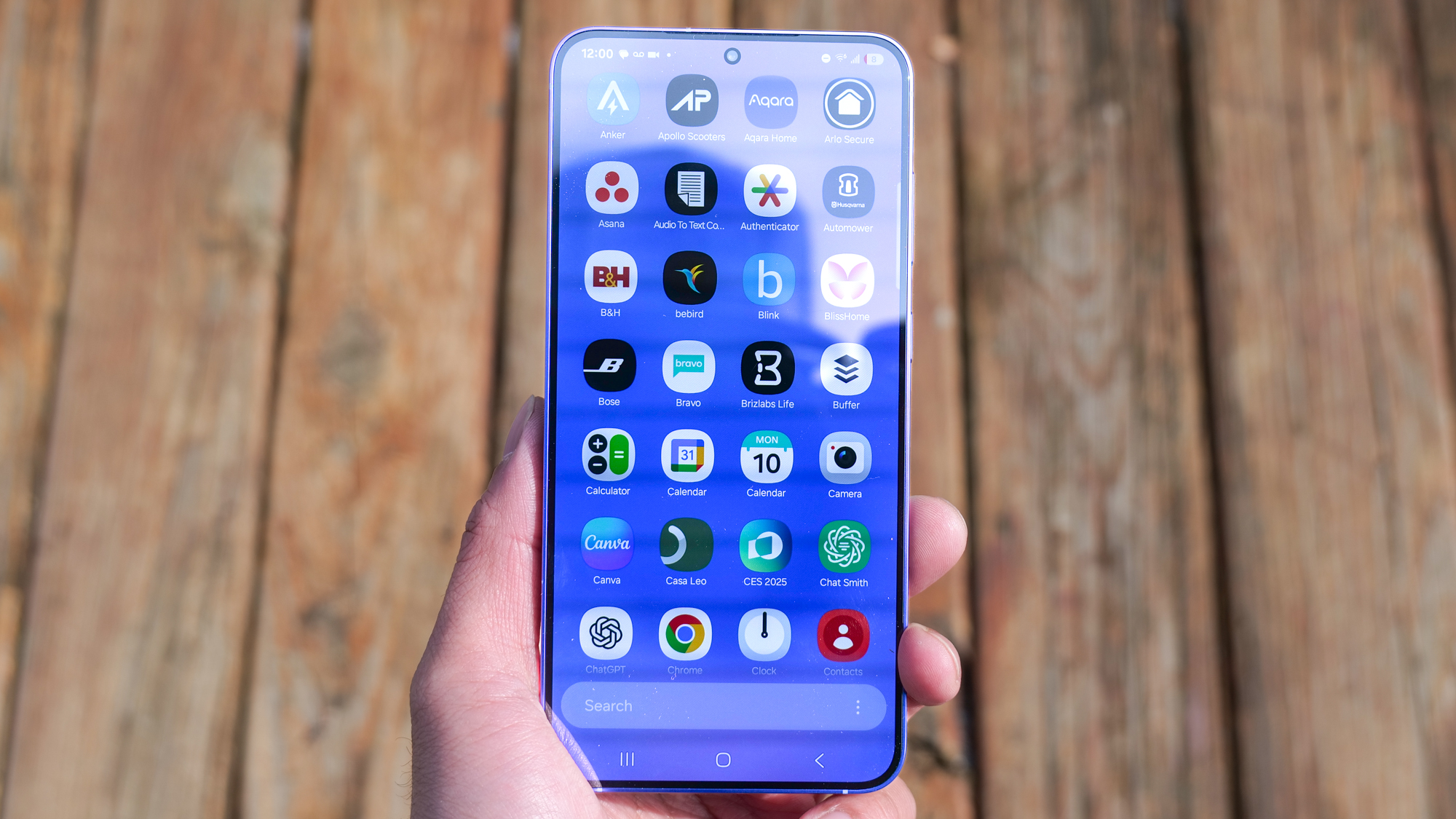
Unless you do a lot of gaming, you won’t appreciate the awesome performance of the Galaxy S25 Plus. The outstanding results are driven by its special Snapdragon 8 Elite “for Galaxy” chipset, which are a step up over the standard S25 in the various synthetic benchmark tests that were run below. In several instances, it beats out the A18 Pro chip in the iPhone 16 Pro and even comes close to outdueling the tuned-up version of the Snapdragon 8 Elite in the Asus Rog Phone 9 Pro.
| Row 0 - Cell 0 | Galaxy S25 Plus | Google Pixel 9 Pro | iPhone 16 Pro | Asus ROG Phone 9 Pro |
| Chipset | Snapdragon 8 Elite for Galaxy | Google Tensor G4 | Apple A18 Pro | Snapdragon 8 Elite (with ROG X Mode active) |
| Geekbench 6 (single-core/multi-core) | 3,141 / 10,153 | 1,948 / 4,794 | 3,400 / 8,391 | 3,207 / 10,227 |
| 3DMark Wild Life Extreme Unlimited (score/fps) | 6,579 / 39.3 | 2,567 / 15.38 | 3,840 / 23.03 | 5,906 / 35.36 |
| 3DMark Steel Nomad Light Unlimited (score/fps) | 2,372 / 17.57 | 1,044 / 7.74 | 1,582 / 11.7 | 2,144 / 15.88 |
| Adobe Premiere Rush time to transcode (mins:secs) | 0:52 | No result | 0:21 | 0:54 |
Everyday functions, such as launching apps, scrolling through web sites, and multi-tasking are handled well by the Galaxy S25 Plus. There’s this fluidness in its performance, too, that effortlessly lets me go from one app to another with minimal delay.
I’m particularly impressed by the Snapdragon 8 Elite's GPU performance, which interestingly enough achieves the smoothest frame rates in 3DMark’s Wild Life Extreme Unlimited test. This is evident in games I play, like Age of Origins, where the world map is scaled perfectly even when there’s heavy action across it.
Samsung Galaxy S25 Plus review: Battery life and charging
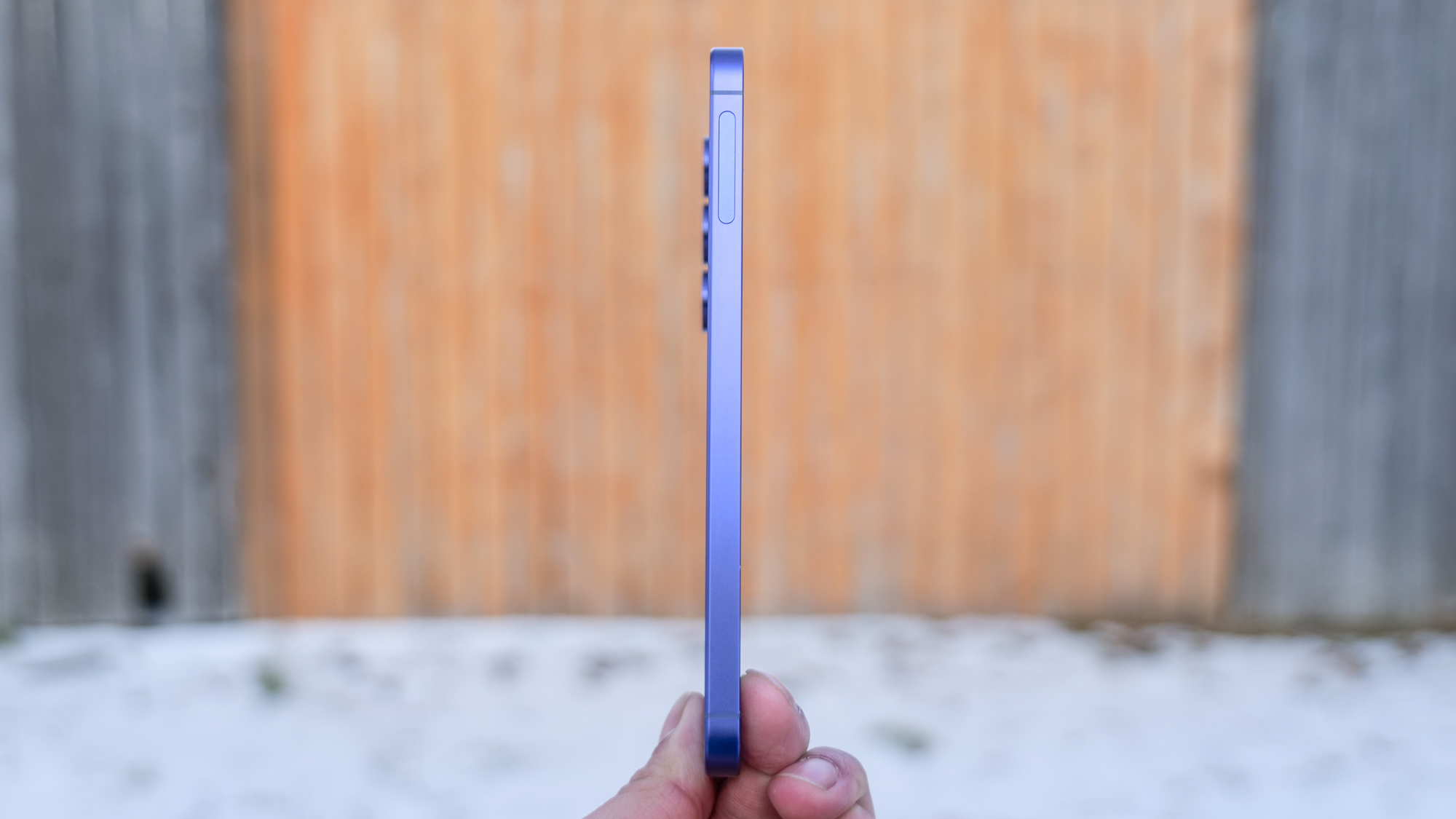
Impressively, Samsung’s able to retain the same sized 4,900 mAh from before while technically being a smaller, lighter phone than its predecessor. But despite having a more power efficient chipset, it doesn’t see the same gains as the S25 and S25 Ultra — and that’s disappointing.
| Chipset | Battery size | Battery life (Hrs:Mins) | |
| Samsung Galaxy S25 Plus | Snapdragon 8 Elite | 4,900 mAh | 16:55 |
| Samsung Galaxy S24 Plus | Snapdragon 8 Gen 3 | 4,900 mAh | 15:56 |
| Pixel 9 Pro | Tensor G3 | 4,700 mAh | 13:37 |
| iPhone 16 Pro | A17 Pro | 3,582 mAh | 14:07 |
In Tom’s Guide’s battery benchmark test, the S25 Plus pulls in a time of 16 hours and 55 minutes with the display set to adaptive mode. It gets more in standard mode where the refresh rate is set to 60Hz, reaching 18 hours and 46 minutes before tapping out. These results are technically improved over the S24 Plus, but I was hoping for much more of a gain. On the flip side, Samsung's middle flagship still has a huge edge over rival phones like the Pixel 9 Pro and iPhone 16 Pro.
There’s no change to the Galaxy S25 Plus' charging speeds either, which remain at 45W wired and 15W wireless. It’s still pretty quick, especially if you’re just looking to top up in a short amount of time. In just 15 minutes of charging, the battery gets up to 38% capacity — while 30 minutes yields a charge of 70%.
Samsung Galaxy S25 Plus review: Software and Galaxy AI
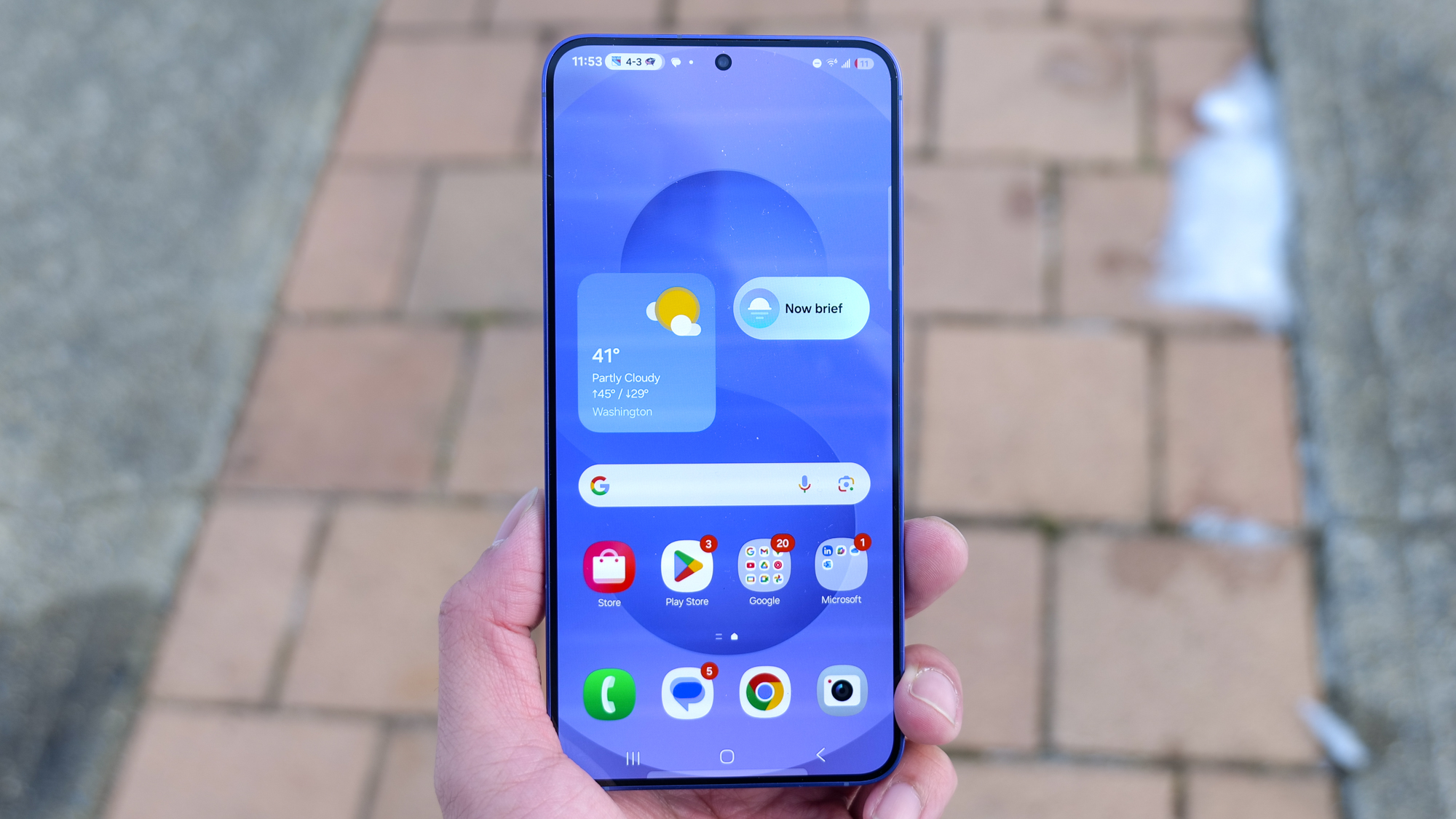
Diehard Samsung users might be in for a shock with the new software in the Galaxy S24 Plus. The One UI 7 software running on top of Android 15 has a significant face lift. In fact, it borrows iOS’ swipe down gesture from the top right corner to access the quick settings menu — while the app panel is now arranged in one scrollable panel.
Functionally, it’s more or less the same with the myriad of features that One UI is known for. For example, I love how multitasking is handled by the Galaxy S25 Plus because I still have access to the edge panel to launch apps quickly from any app I have opened. Plus, there’s also the swipe gesture that activates split screen mode and one-handed mode that resizes an app into its own window.
While I do like this new facelift, the bigger story here is all the new Galaxy AI features. I won’t go into a whole lot of detail into every single one because our Galaxy S25 Ultra review dials into all of them, but I’ll briefly share my experiences about them.
On the top of my list is the one that asserts itself in the home and lock screens. Now Brief is one of the latest Galaxy AI additions that draws information from various apps and curates them into one centralized area — so the stuff it aggregates in the morning will look different in the evening. While I think it’s helpful in the sense that it provides me an overview, I just wish it would incorporate more from the third party apps I use. Perhaps that will change over time.
The most ambitious AI feature is cross app actions, which leverages a combination of Google Gemini and Samsung’s Bixby to perform actions with voice commands. While it works flawlessly with all the native apps on the phone, cross apps actions need to support more third party apps before it has more impact on me.
Like really, who needs to ask Gemini to look up the Yankee’s entire 2025 season and add it to their calendar? I would much rather have real cross app actions that can look up the next train I need to catch to home and buy the ticket for me, all without having me to do the painstaking actions myself. Now that would be cool, but only two third party apps support this feature: WhatsApp and Spotify.
Call Transcript is the most underrated new Galaxy AI feature because it comes in handy when you least expect it. I’ve had a couple of long phone calls to my veterinarian about treatments for one of my cats, and instead of having to rely solely on my memory about the conversation, Call Transcript transcribes the whole thing for me to review later — complete with a summary, too.

While there aren’t as many media-centric Galaxy AI features introduced here than before, the one I’m most impressed with is Audio Eraser. That’s because in my testing, it does a much better job at removing background noise in videos than Apple and Google’s version.
I recorded a clip with a lot of heavy noise at Bryant Park as I was speaking to the camera, but Audio Eraser makes it sound like a noise cancellation mode was activated when I was recording. It works on any video, not just those captured by the Galaxy S25.
And finally there’s Samsung’s Personal Data Engine, which drives many of the personalization services on the phone — namely the Now Brief. However, I’d like to see it integrated more into the Modes and Routines app. There are a handful of preset routines that I can tweak and enable, like navigating home, but it won’t create these routines on its own. I would love to see the Personal Data Engine learn my habits and routines to build (and create) routines without my intervention.
For the most part, the new Galaxy AI features make the phone more functional than ever before. I’m spending less time doing tedious actions and leaning on Galaxy AI to do them for me, but there’s still work needed before anything here can actually work as a personal assistant. More third party apps support is needed with cross app actions to make it a much more powerful tool.
Nevertheless, you still have 7 years of major Android and security updates support with the Galaxy S25 Plus— which makes me optimistic that the phone might add newer Galaxy AI features down the road.
Samsung Galaxy S25 Plus review: Verdict
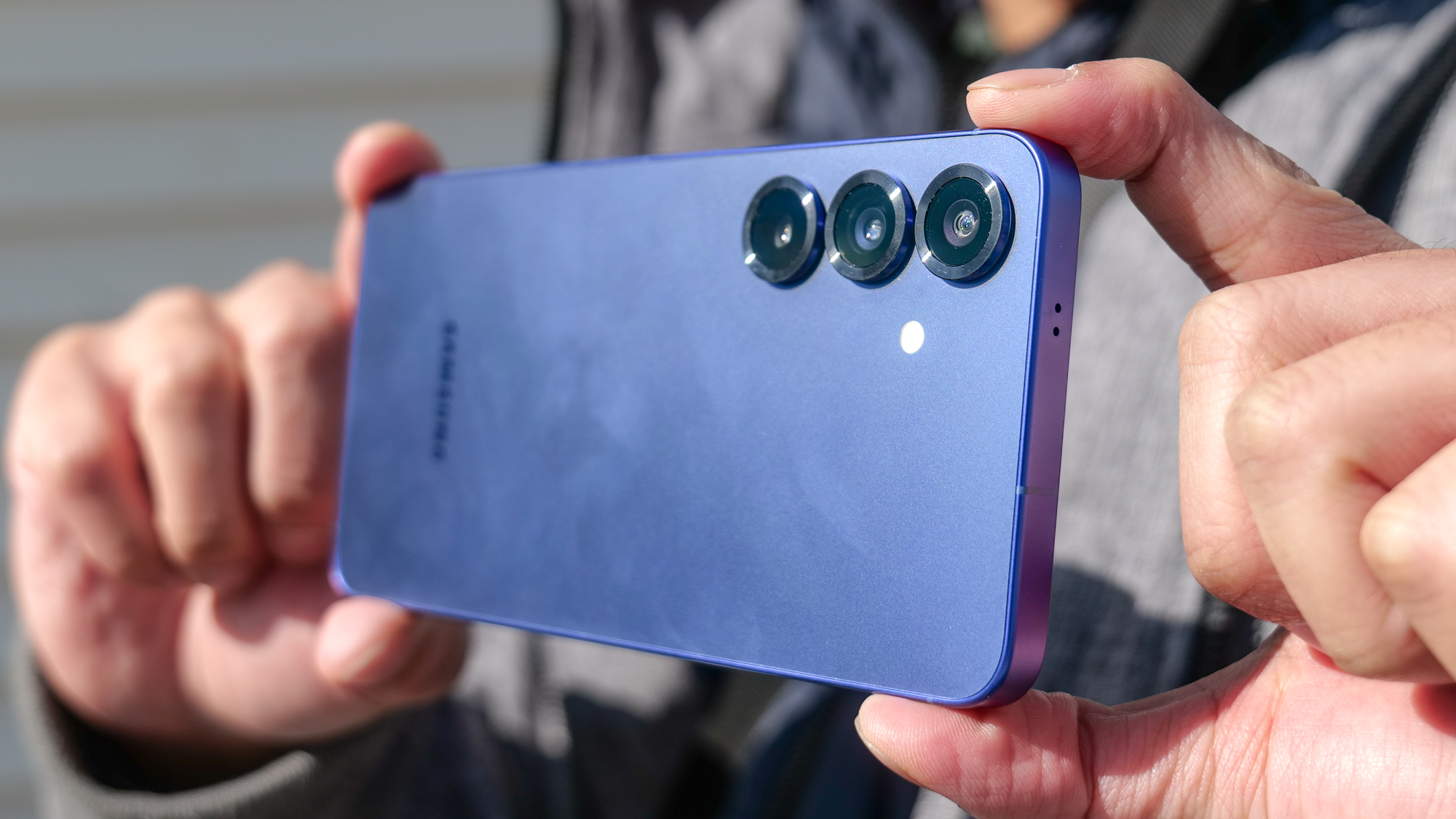
The Galaxy S25 Plus isn’t a terrible phone. Quite the contrary, it’s one of the smartest and most feature packed phones you’ll find. However, it’s in no man’s land because of its price and where it’s positioned in the lineup of best Samsung phones
There’s $200 separating the prices of S25 Plus from the standard S25, but the only difference is that the Plus has a larger display and double the storage capacity. The cameras are identical on both models, too. However, I’m disappointed that the battery life performance isn’t longer given how the S25 Plus has a much larger capacity.
Another thing that softens the Galaxy S25 Plus’ value is that it’s competing at the same price as the iPhone 16 Pro. The Galaxy S25 Plus clearly doesn’t have as good of a camera performance, especially in the telephoto zoom department. This is a big deal breaker for me because if I’m spending that amount, I’d go with the one with the better camera.
When it comes down to it, the saving grace for the S25 Plus is the new batch of Galaxy AI features. I find most of the new features to be practical, and hopefully over time, cross app actions will open up more to other apps to make it even more useful — but this also applies to the cheaper Galaxy S25, which puts the S25 Plus in a pickle. Unless you really crave the larger screen, I would recommend sticking to the Galaxy S25.

John’s a senior editor covering phones for Tom’s Guide. He’s no stranger in this area having covered mobile phones and gadgets since 2008 when he started his career. On top of his editor duties, he’s a seasoned videographer being in front and behind the camera producing YouTube videos. Previously, he held editor roles with PhoneArena, Android Authority, Digital Trends, and SPY. Outside of tech, he enjoys producing mini documentaries and fun social clips for small businesses, enjoying the beach life at the Jersey Shore, and recently becoming a first time homeowner.
You must confirm your public display name before commenting
Please logout and then login again, you will then be prompted to enter your display name.
